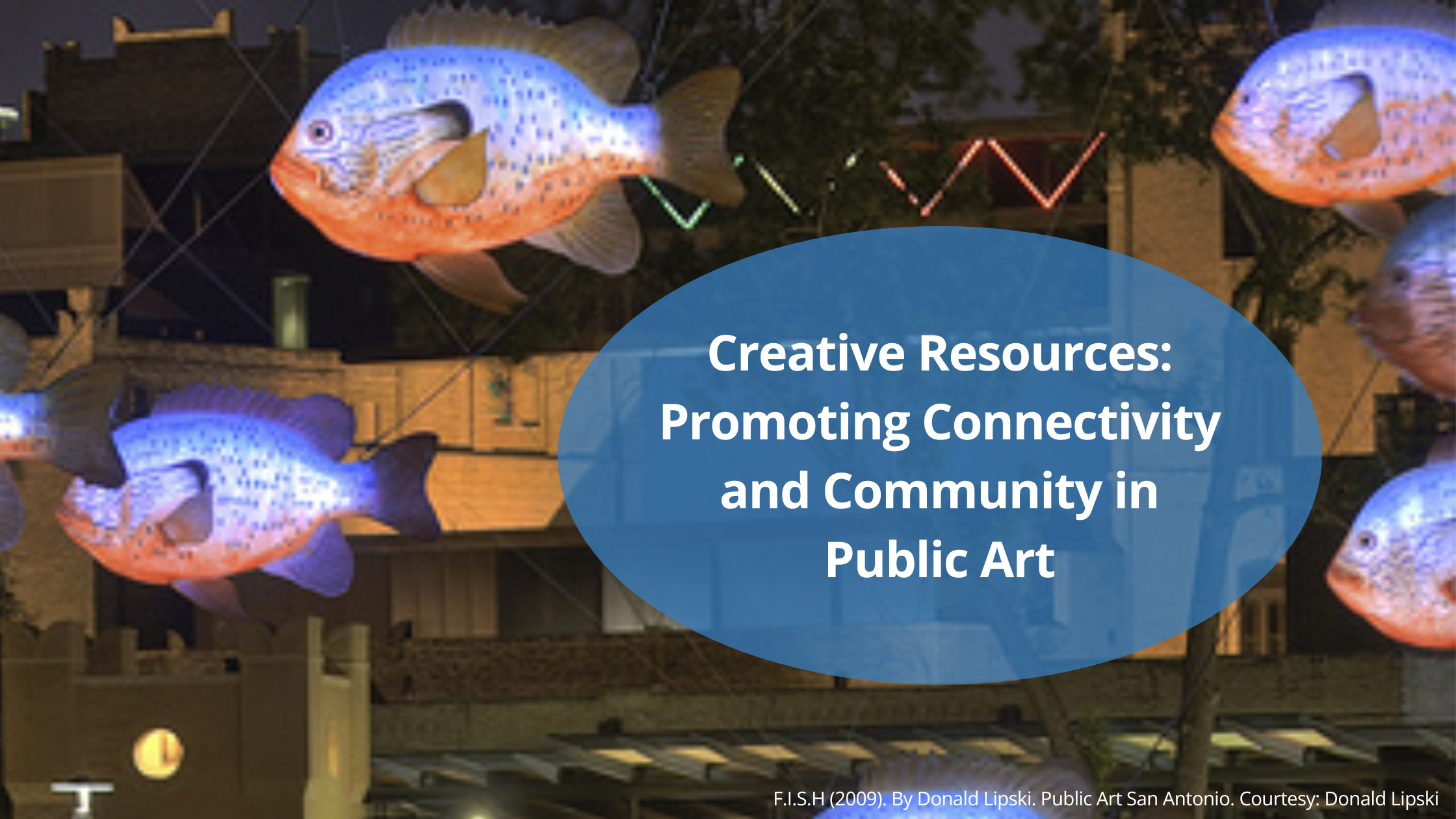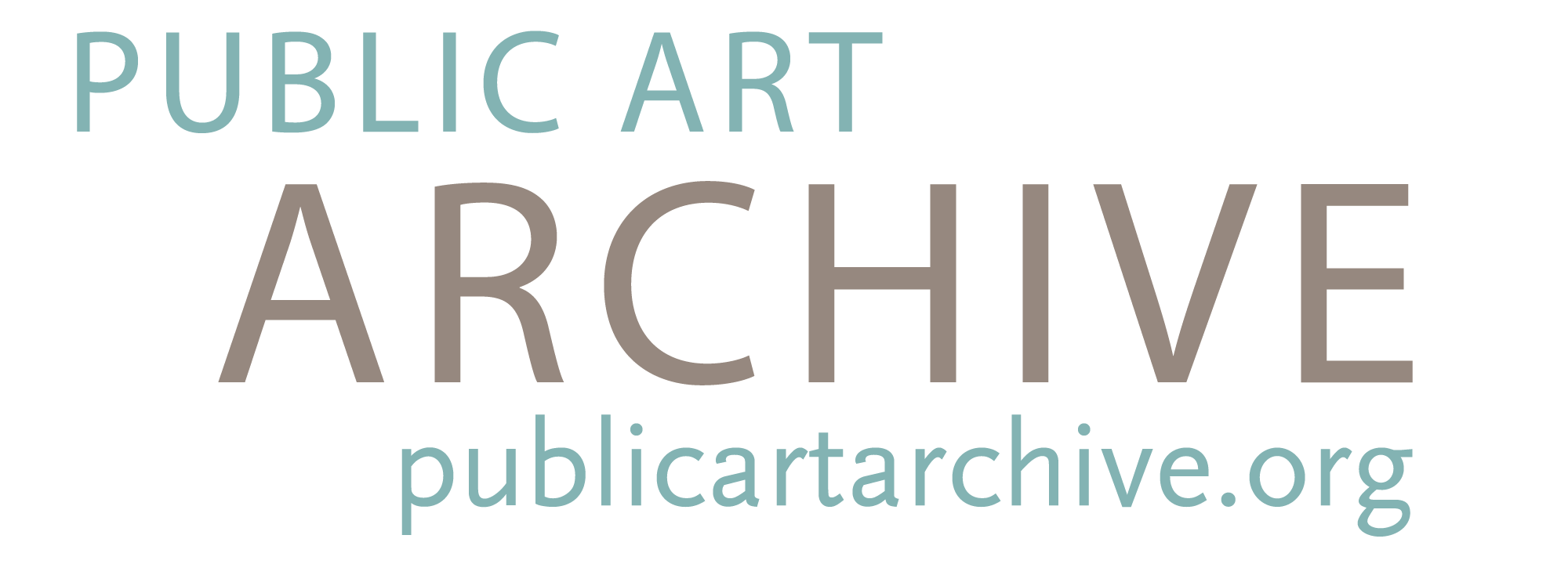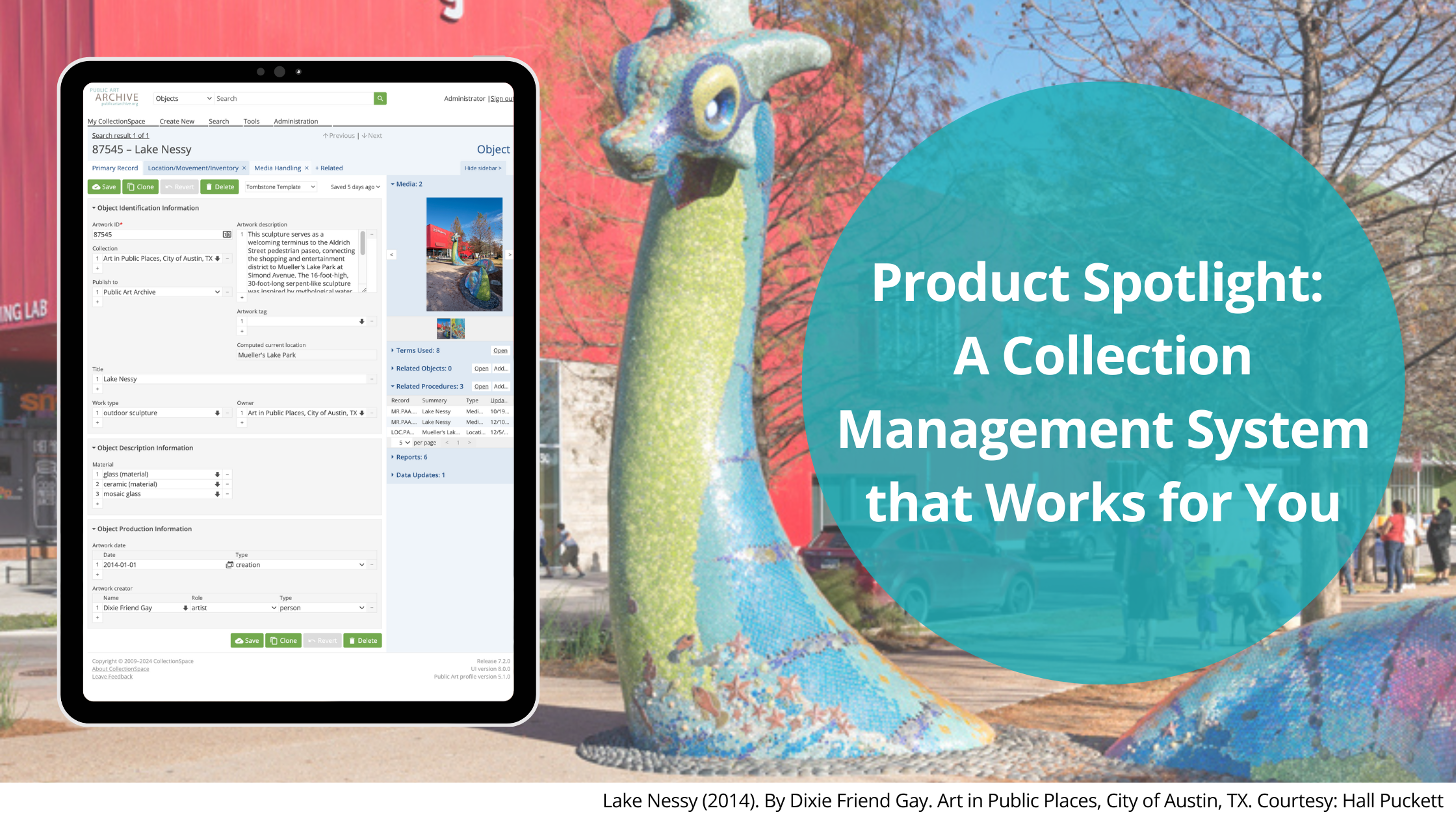
The Public Art Archive (PAA) team is dedicated to working in alignment with our mission to make public art more public. Users of PAA can likely deduce that we spend a significant amount of time with the data that feeds into our public engagement portal: we catalog artwork, provide data collection workflows, clean and reconcile data submissions from artists and arts organizations, and perform quality control measures. We also administer and provide support for the Public Art Archive Collection Management System (CMS) and other services. Beyond these roles and the ongoing effort to grow the number of artworks available on the Public Art Archive, the PAA team aims to cultivate connectivity in the public art field.
Unlike artwork in a museum or gallery space, where there is often a person or placard providing information about the artwork, in public art there is a greater inherent distance between the creator and the public experience. Typically, when the public encounters works of public art, it’s while they’re on their way somewhere—whether casually passing by or on a guided tour. Although their interest may be sparked, without the right resources, there’s a risk of missing out on opportunities to establish more profound and meaningful connections. In the case of public art, digital space acts as the didactic. The digital space provided through the Public Art Archive platform is the essential historical record for works of public art, providing the opportunity for artists’ voices to be heard, context to be shared, and connections to be made.
Through our public engagement portal and outreach efforts, the PAA team is working to foster the connection between people and public art, which lies at the intersection of technology and human-centeredness. Our outreach work includes stewarding the Public Art in Private Development Database and collaborating on storytelling projects that bring lasting visibility to past public art movements and paradigm-shifting projects. In addition, our team has begun presenting at conferences and developing shareable creative resources that explore ways to engage and cultivate connectivity in public art. Through this work, we aim to promote community amongst public art professionals and enthusiasts, offer valuable resources for all public art audiences, and foster growth in our field through thought partnership and collaboration.
Last fall, the PAA team had the distinct honor of presenting at two conferences hosted by leading international organizations in fields closely allied with public art: the International Sculpture Center and the Visual Resources Association. We loved these opportunities to engage with and learn from other experts, to grow our capacity for impact through idea sharing, and especially to welcome new public art enthusiasts to our community through these experiences. The positive outcome of these opportunities made us want to adapt our presentations into digital resources that we could make available online to share with the field and generate future connections.
Cultivating a Collaborative Public Art Community
As a non-profit organization, it is of primary importance for our team to cultivate reciprocal relationships with the contributors to the Public Art Archive. Each artwork added to PAA contributes to enriching our understanding of the public art landscape and enhances the visibility of all the public art surrounding it. We appreciate every submission we receive to our public engagement portal, each of which helps support our mission, and we want to ensure we are offering something in return to foster a thriving, vibrant public art community.
Our new video resource, Cultivating a Collaborative Public Art Community, explores some of the unique ways PAA has partnered with artists and arts administrators across the country to bring their artworks to new audiences and showcase their impact. With both administrators and artists new to public art documentation in mind, we provide a step-by-step overview of contributing artworks to PAA and demonstrate how an artist’s or organization’s submissions can be leveraged into a digital portfolio, complete with an interactive map, all at no cost. We take a deep dive into a few context-rich examples of artwork documentation, highlighting how even a short description can go beyond describing an artwork’s components to showcase a public artwork as complex and meaningfully connected to its community and place. If you are interested in exploring strategies to leverage the PAA platform to better understand patterns and trends or increase your artworks’ visibility within the public art field, we invite you to explore this resource.
Diligent Data
One of our favorite things about administering PAA’s Collection Management System (PAA CMS) is that we can work with collection administrators who are just as dedicated to public art and promoting positive change in the field as we are. These relationships inform the roadmap of enhancements we implement in the PAA CMS that make public art collection management easier and provide ways to measure and improve collection practices.
This second resource, Diligent Data, explores the way PAA is working toward more flexible, responsive cataloging structures that allow for greater opportunities to analyze, advocate, (re)discover, and (re)imagine the power of digital public art collections. It outlines key areas where PAA has implemented data practices to promote access, engagement, and accountability between public art collections, their administrators, and their wider communities. We invite anyone who wants to think about digital collections differently or more expansively to check out this resource.
Interested in learning more? Reach out to us! We would love to connect.
About the Author

Alison Verplaetse is the Archivist for the Public Art Archive. In this role, she helps artists and organizations bring visibility to their work, increasing access to and interest in public art throughout the world. With a background in studio art, art history, and library science, Alison began her career as a conservator of books and paper at the University of Colorado Boulder and Harvard University. Before joining the Public Art Archive, she worked at a Denver-based public art fabrication and conservation company, where she was a sculpture fabricator and traveled throughout the country to install works of public art.



